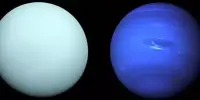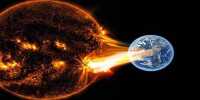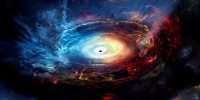A new form of star has been identified by astronomers that is completely perplexing. Instead of hydrogen and helium, the stars’ surfaces are covered in oxygen and carbon. They could be the result of a strange and unusual star collision, according to astronomers. To comprehend why this is unusual, consider how stars create elements. For the majority of their lives, stars fuse hydrogen atoms into helium in their cores. When the hydrogen in the atmosphere runs gone, stars become red giants and begin fusing helium into carbon and oxygen.
If they aren’t huge enough, they leave behind a helium white dwarf, which contains just traces of carbon, oxygen, and nitrogen, which constitute helium’s ashes. Red giants, too, leave behind a carbon-oxygen-rich white dwarf if they aren’t large enough to progress to the next stage of fusion. However, the stars described in a new research published in the Monthly Notices of the Royal Astronomical Society Letters have a surface rich in oxygen and carbon, accounting for around 20% of the total surface composition. The two stars have a lot of helium beneath their strange surface.
“Normally, stars with these surface compositions would have burned all of the helium in their cores and would be on their way to becoming white dwarfs.” In a statement, principal author Professor Klaus Werner of the University of Tübingen remarked, “These new stars pose a serious challenge to our knowledge of stellar evolution.” So, what’s the deal? Astronomers from the University of La Plata and the Max Planck Institute for Astrophysics proposed a possible solution. Another team proposes that the peculiar stars identified could be the result of a merger of white dwarfs in a second report published in the Monthly Notices of the Royal Astronomical Society Letters.
“We believe the stars discovered by our German colleagues evolved in a very uncommon type of stellar merger event between two white dwarf stars,” stated main author Dr Miller Bertolami of the Institute for Astrophysics of La Plata. “Normally, white dwarf mergers do not result in the formation of carbon- and oxygen-rich stars, but we believe that in binary systems with very specific masses, a carbon- and oxygen-rich white dwarf could be disrupted and end up on top of a helium-rich one, resulting in the formation of these stars.” Because evolutionary models cannot explain this mechanism or the existence of these stars, more research and instances, in addition to the stars PG1654+322 and PG1528+025 presented in this study, are required.














